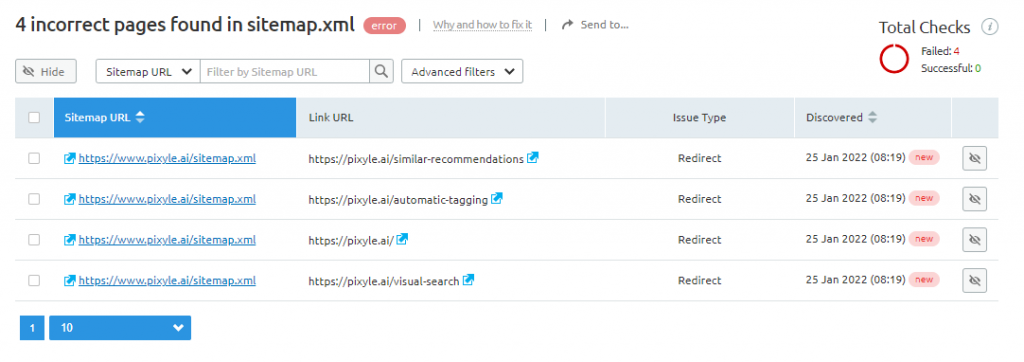How to fix incorrect pages found in sitemap.xml?
Using the sitemap.xml file will get search bots to crawl your website’s pages, but you only want the sitemap.xml file to contain high-quality pages that are useful to your audience. Adding some pages to the sitemap.xml could actually cause an error.
One of the most common sitemap.xml errors is the ‘incorrect pages found’ error. Continue reading to learn what triggers this issue and what to do when you receive the ‘incorrect pages found’ error.
Why are XML sitemaps important?
XML sitemaps provide search engines with a list of a website’s URLs and provide data in the form of a comprehensive map of the website’s pages. Because of the sitemap, search engines and spiders can better navigate your website and prioritize the pages they crawl.
A huge website that takes a spider a considerable amount of time to crawl can benefit significantly from utilizing an XML sitemap. If spiders didn’t have access to an XML sitemap, they would be unable to construct the whole list of pages that are accessible until they complete a crawl of the entire website.
What triggers an XML sitemap incorrect page issue?
Several issues could trigger an ‘incorrect pages found’ error message. This issue will occur if the sitemap.xml file that you’re using contains URLs that:
- Link to web pages with duplicate content
- Link to other websites that have the same content
- Redirect the user to another website
- Return a non-200 status code
If you populate your sitemap.xml file with these kinds of URLs, search engines may become confused. This could result in unnecessary crawling that may even get your sitemap rejected.
How to fix incorrect pages found in sitemap.xml?
There are a few different techniques you can use if your SEO audit discovers pages in your sitemap.xml that contain errors. You can follow the process below to correct your pages:
- Make sure that your sitemap.xml file contains accurate information for all of the URLs that are included. If any of the URLs are incorrect, make the necessary modifications to correct them.
- Use a validator tool to confirm the sitemap.xml file errors. This will assist you in determining which file contains an error that needs to be repaired.
- Send the sitemap.xml file that you have created to Google Search Console. This will assist Google in accurately indexing your pages and will ensure that they are included in search results.
- Keep an eye on your audit reports to make sure the problem has been fixed. If the problem continues, you should get in touch with the audit support team so that they can provide more assistance.
Here’s an example of incorrect pages found in an audit report:

Find word on fixing incorrect pages in your sitemap
The sitemap is important for getting your website indexed, but you have to be careful about the pages that are included. Certain URLs can trigger an incorrect page error that needs to be fixed so make sure the correct pages show up in search results.
If you’re looking for SEO project management software to better manage your workflow, clients, and business – evisio.co is your solution. Try evisio.co for free here!
